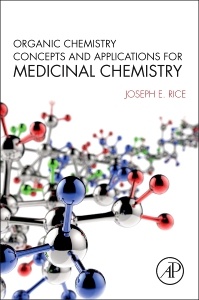Description
Organic Chemistry Concepts and Applications for Medicinal Chemistry
Author: Rice Joseph E.
Language: English
Subject for Organic Chemistry Concepts and Applications for...:
Keywords
π-bond; σ-bond; Absolute configuration; Acid; Aromatic; Base; Branch; Bridged rings; Chiral center; Conformation; Conjugated system; Conjunctive nomenclature; Designated nomenclature; Diastereomer; Dihedral angle; Eclipsed; Electron donating; Electron withdrawing; Electronegativity; Enantiomer; Entropy; Equilibrium; Field; Functional group; Fused rings; Hansch partition coefficient; Henderson-Hasselbalch equation; Heterocycle; Hybrid orbital; Hydrogen bond; Hydrophilic; Hydrophobic; Hyperconjugation; Inductive; Ionization; Isomer; Lewis acid; Lewis base; Lipid bilayer; Morphinan; Neutral; Nonbonded interactions; Numbering; Orbitals; Partition coefficient; Polar effect; Prefix-suffix nomenclature; Prochiral; Prostaglandin; Resonance; Salt; Spiro rings; Steroid; Substituent; Tautomer; Unsaturation; Valence-shell electron-pair repulsion
224 p. · 15x22.8 cm · Paperback
Description
/li>Contents
/li>Readership
/li>Biography
/li>Comment
/li>
Organic Chemistry Concepts and Applications for Medicinal Chemistry provides a valuable refresher for understanding the relationship between chemical bonding and those molecular properties that help to determine medicinal activity. This book explores the basic aspects of structural organic chemistry without going into the various classes of reactions. Two medicinal chemistry concepts are also introduced: partition coefficients and the nomenclature of cyclic and polycyclic ring systems that comprise a large number of drug molecules. Given the systematic name of a drug, the reader is guided through the process of drawing an accurate chemical structure. By emphasizing the relationship between structure and properties, this book gives readers the connections to more fully comprehend, retain, apply, and build upon their organic chemistry background in further chemistry study, practice, and exams.
Advanced students moving from organic chemistry to medicinal/pharmaceutical chemistry; exam takers in pharmacy, medicine, etc; professionals in chemistry and pharmaceutics who require review for practice
- Focused approach to review those organic chemistry concepts that are most important for medicinal chemistry practice and understanding
- Accessible content to refresh the reader's knowledge of bonding, structure, functional groups, stereochemistry, and more
- Appropriate level of coverage for students in organic chemistry, medicinal chemistry, and related areas; individuals seeking content review for graduate and medical courses and exams; pharmaceutical patent attorneys; and chemists and scientists requiring a review of pertinent material




